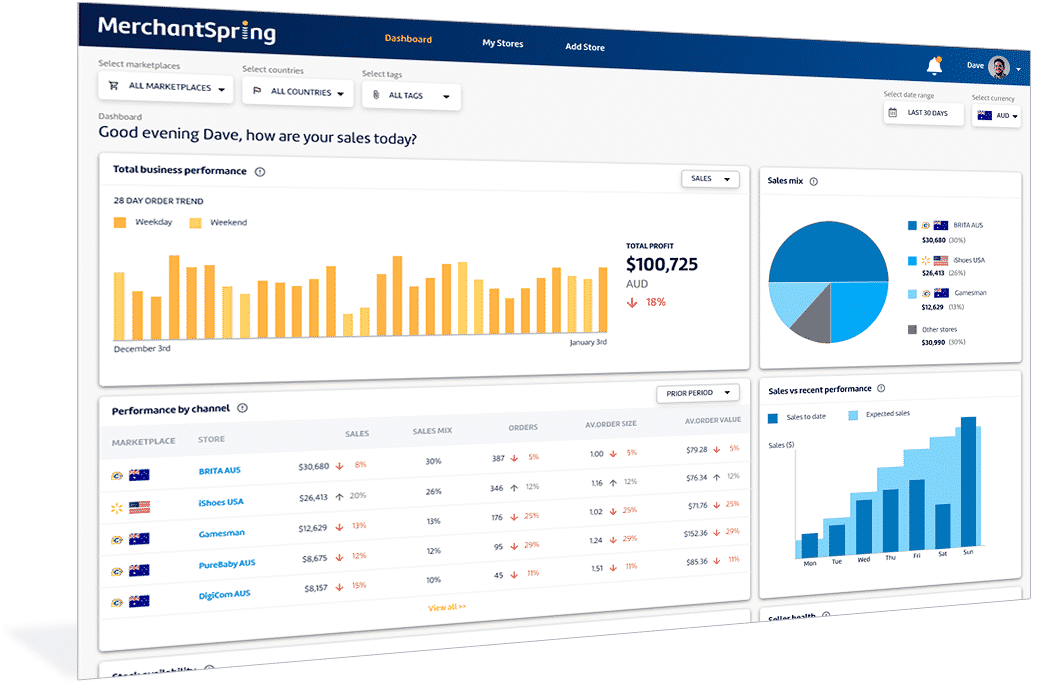How to Conduct an Amazon Product Listing Audit
You uploaded your inventory to Amazon and created listings for all products. You’ve been waiting for a sale and…nothing. So, what happened?
Amazon is the leading ecommerce platform, which makes it highly competitive. There are 2.5 million active Amazon sellers, and you must compete to earn the buy box and rank at the top of the SERPs.
Fortunately, there are plenty of things you can do, but finding out what’s failing will require you to conduct an Amazon product listing audit.
Why Some Product Listings Don’t Rank
An Amazon product listing audit will uncover many opportunities that you’re missing. However, most of these opportunities are ones that many sellers gloss over.
No SEO Optimisation
Search engine optimisation (SEO) is one of the most effective and affordable ways to increase sales. With SEO, you employ various tactics, such as keyword optimisation, to improve your rankings in search engine results pages (SERPs).
The first step in conducting an SEO Amazon listing audit is understanding how Amazon's search engine works. Amazon utilises the A10 algorithm to identify listings with specific qualities, including buyer intent and relevance.
Sellers can use these best practices to optimise their SEO strategy and create listings that meet buyers’ demands. For example, if you’re selling beauty products, you can optimise your titles and descriptions with popular keywords in your niche that perform well in the SERPs while also adhering to buyer intent.
That said, there are other ways to use Amazon’s algorithms to make your product listings compelling to prospective buyers and correct other common missed opportunities.
Weak Titles
Many sellers encounter similar challenges when creating titles for their Amazon product listings. Some common problems include:
- Vague/non-descriptive titles
- Keyword stuffing
- Zero keyword optimisation
- Duplicate titles for all products
- Titles with spelling and grammatical errors
There’s one main reason to avoid these errors: the product title is the first thing your buyers will see.
A title tells buyers what the item is and how it differs from other products. If you make any of these common errors, you’ll not only damage your SEO performance but also your reputation.
No Bullet Points or Descriptions
After a potential buyer clicks on the product listing, they will skim the information to see if the item fits their needs. This is the primary opportunity to convert your leads and demonstrate that your product is the best on the market.
But what if you don’t have any crucial product information? Your customer won’t know anything about your product and will continue their search to find what they’re looking for.
Amazon offers two main copywriting areas in a listing: bullet points and descriptions. Bullet points are where you list concise information, such as features and key benefits. Descriptions are long-form, and sellers will use this space to add more details about the item.
While there are best practices for crafting bullet points and descriptions, it's essential to understand that these vary by product type, category, and industry. Technical products, such as electronics, will have more detailed and specific descriptions compared to personal care products.
How to Perform an Amazon Listing Audit
Now that you know the common Amazon listing issues, sellers only need to take a few steps to audit product pages and resolve these problems.
Keyword Indexing
If you’re already optimizing your listings for SEO, use an Amazon product listing audit to ensure they are ranking for these search terms. Keyword indexing tools can highlight which keywords you are and aren’t ranking for.
What if you’re not ranking for high-performing keywords? Or you don’t have a keyword strategy in place? Most sellers can find free Amazon keyword tools (or at least affordable ones).
Search for keywords in your niche and see which one generates the most traffic with the least amount of competition. Use that keyword in your title and description.
Use additional keywords that are relevant to your listing and align with buyer intent. Include these keywords throughout your content so Amazon’s search engine bots can crawl your listings and rank you for them.
Evaluate Product Titles and Copy
While some programs and tools can help sellers improve and optimize their product titles and descriptions, sellers can start by looking out for the errors that we mentioned earlier.
Other details you may want to revise include vague claims (use only those backed by research) and missing data (such as warranty information).
Review Visual Content
There are numerous visuals that sellers should include in listings, such as:
- Product images
- Infographics
- Lifestyle photos
- Videos and GIFs
Like product titles and bulleted lists, buyers will immediately notice your visuals. Sellers shouldn’t just review the quality of their visuals but the way they’re displayed.
For example, consider how your visuals align with your text. Don’t overclutter your listings, but avoid using too few visuals as well. Aim for at least three visuals in one listing and space them out well between text.
Assess Pricing
A good pricing strategy is also key to converting more prospects into customers. If your items are overpriced, your buyers may support a competitor. On the contrary, if your products are underpriced, it can hurt their value.
The easiest way to assess your pricing strategy is to see what your competitors are charging. Try to charge a similar list price to other products in your category.
If this is still too low, there are many ways to justify the price increase. Offer detailed copy, eye-catching visuals, and promotions like sales or product bundles.
Respond to Q&As
While you try to have as descriptive copy as possible, prospective customers will still have questions you may not have considered when creating your listing. This is why regularly responding to Q&As can prevent low ratings and complaints.
If you notice you’re getting the same questions, mention these topics in the listing. Use these points to design visuals and include them in the bullet points and description.
Amazon Product Listing Audit Tools
While you can conduct an Amazon product listing audit DIY, many sellers find it more effective to use auditing tools that can find issues that you may not have considered. Some of these tools include:
- Amazon Brand Analytics. Helps sellers understand their customers with purchase and search data.
- Helium 10 Amazon Product Analyser. Compares how your listings perform next to competitors.
- Epinium Amazon Listing Tool. Automates Amazon listing optimisation.
As an alternative, Amazon product listing services can offer many of the key tactics mentioned in this blog, such as SEO and copywriting.
Why an Amazon Listing Audit is Important
Failing to optimise your Amazon listings can result in fewer sales and lost customers. An Amazon product listing audit can find any errors or missed opportunities in your listings to not only increase revenue, but also convert more buyers.
As you regularly audit your listings, your entire selling strategy will improve as a result. You’ll gain more visibility on Amazon SERPs, generate more traffic from ads, dominate the competition, and you’ll retain more customers.

About Stephanie Jensen
Stephanie Jensen has been writing ecommerce content for seven years, and her copy has helped numerous stores rank on Amazon. Follow her on LinkedIn for more insight into freelance writing and creating high-quality content.









Add a Comment